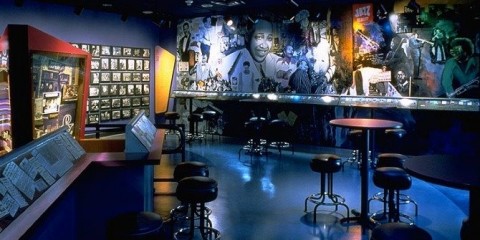

This meant that musicians from around the Midwest knew that they could still find paying crowds in Kansas City.

Pendergast kept the booze flowing in Kansas City during Prohibition and lessened the impact of the depression in Kansas City by creating “The 10 Year Plan.” This public works program kept Kansas Citians employed working on projects like the Downtown Airport, City Hall, Convention Center, and Municipal Courthouse. The forward thinking “Boss Tom” Pendergast had limited the impact of both in Kansas City. The Great Depression and Prohibition had limited the crowds and venues they played around the country. The late twenties and early thirties were difficult times for jazz musicians. This legacy of jazz is proudly preserved at The Majestic Restaurant’s Kansas City Jazz Club. The new sound was unique to Kansas City that drew in some of the finest musicians from around the country. Legendary Kansas City jazz districts like 12th Street and 18th and Vine showcased this sound and raised the spirits of depression-era Kansas City residents. Kansas City jazz was a vibrant form of music that was fostered at a time when Kansas City was considered “The Paris of the Plains.” This rebellious form of jazz grew out of the speakeasies and eventually filled dancehalls throughout the town. While this may be correct, it was in Kansas City that jazz truly came of age. Most music historians consider New Orleans the cradle of jazz.

The Majestic Restaurant proudly features Kansas City jazz seven nights a week.


 0 kommentar(er)
0 kommentar(er)
